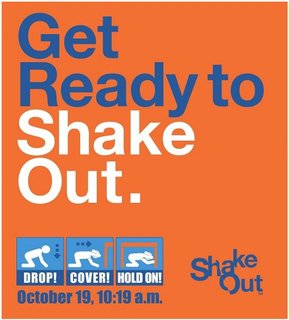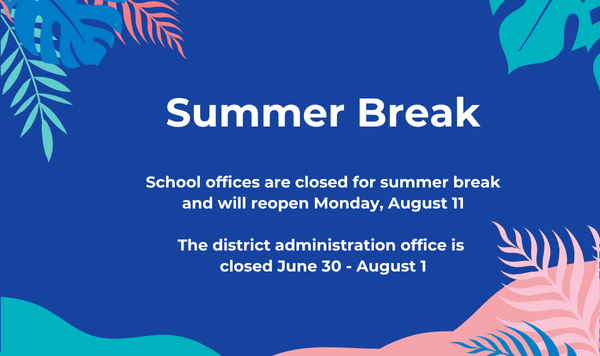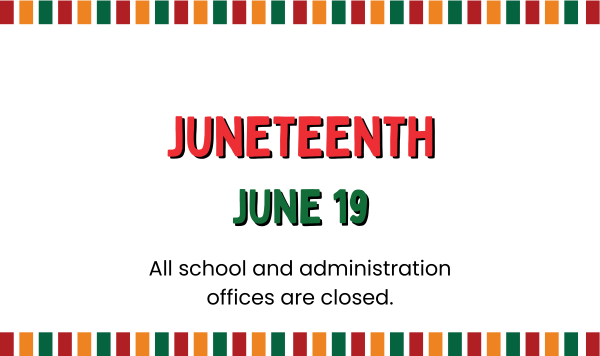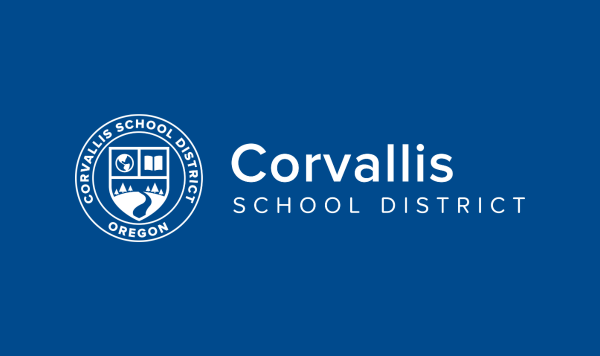Important News
Corvallis School District closed for summer break
Great Oregon Shakeout

Each October, the Corvallis School District participates in the Great Oregon Shakeout, an earthquake preparedness drill. The main goal of the ShakeOut is to get Oregonians prepared for major earthquakes, and to use the ShakeOut as an opportunity to learn what to do before, during, and after an earthquake. This year's drill will take place on October 19 at 10:19 am.
Earthquake Safety Actions
Indoors
- If you are indoors when an earthquake strikes, stay there. Move away from windows, skylights, doors and things/items that could fall.
- Drop, cover, and hold until the shaking stops. A good place to take cover is under a desk or table. You should also grab hold of the leg of the desk or table so if there is movement, the table or desk will move with you and keep you covered.
- Once the shaking has stopped, move outdoors.
Outdoors
- Move quickly and safely into the open, away from electrical lines, trees, and buildings. Drop to the ground and wait for the shaking to stop.
- You are not to re-enter buildings.
- If you are driving, carefully and slowly bring your vehicle to a stop at the side of the road away from traffic. Do not stop on or under bridges, under power lines or near roadway signs that might fall. Once the shaking has stopped, you can continue driving. Watch carefully for possible damage to the roadway.
Visit http://www.earthquakecountry.org/sevensteps for tips on how to prepare, protect, and recover.
Emergency Communications Reminders
The Corvallis School District uses the FlashAlert Newswire to announce weather closure and emergency information via all local news outlets. You may also opt-in for FlashAlert email or
text messages. You may also download the free app for iOS and Android devices. We also use social media to share news involving school closures and emergencies, as well as what is going on within the school district.
- In an emergency, DO NOT go to your child’s school. Information and reunification information will be shared as quickly as possible through the district’s emergency notification process.
Tips from the Federal Communications Commission:
It is important to keep in mind that during an emergency, many more people are trying to use their wireless and wireline telephones at the same time when compared to normal calling activity. When more people try to call at the same time, the increased calling volume may create network congestion.
- Limit non-emergency phone calls. This will minimize network congestion, free up “space” on the network for emergency communications and conserve battery power if you are using a wireless phone;
- Keep all phone calls brief. If you need to use a phone, try to use it only to convey vital information to emergency personnel and/or family;
- Try text messaging, also known as short messaging service (SMS) when using your wireless phone. In many cases text messages will go through when your call may not. It will also help free up more “space” for emergency communications on the telephone network.
General Safety Preparedness
- Make a family emergency communication plan and include your pets.
- Identify an out of town emergency contact to coordinate information with family/friends.
- Check on neighbors.
- Keep an emergency kit wherever you spend time: home, car, work etc.
- Download the FEMA App and set up local alerts
- Listen to local officials by radio, TV, or social media and take action.
- Practice your preparedness plans with a drill or exercise.
- Take a first aid class so you can help until first responders arrive.


